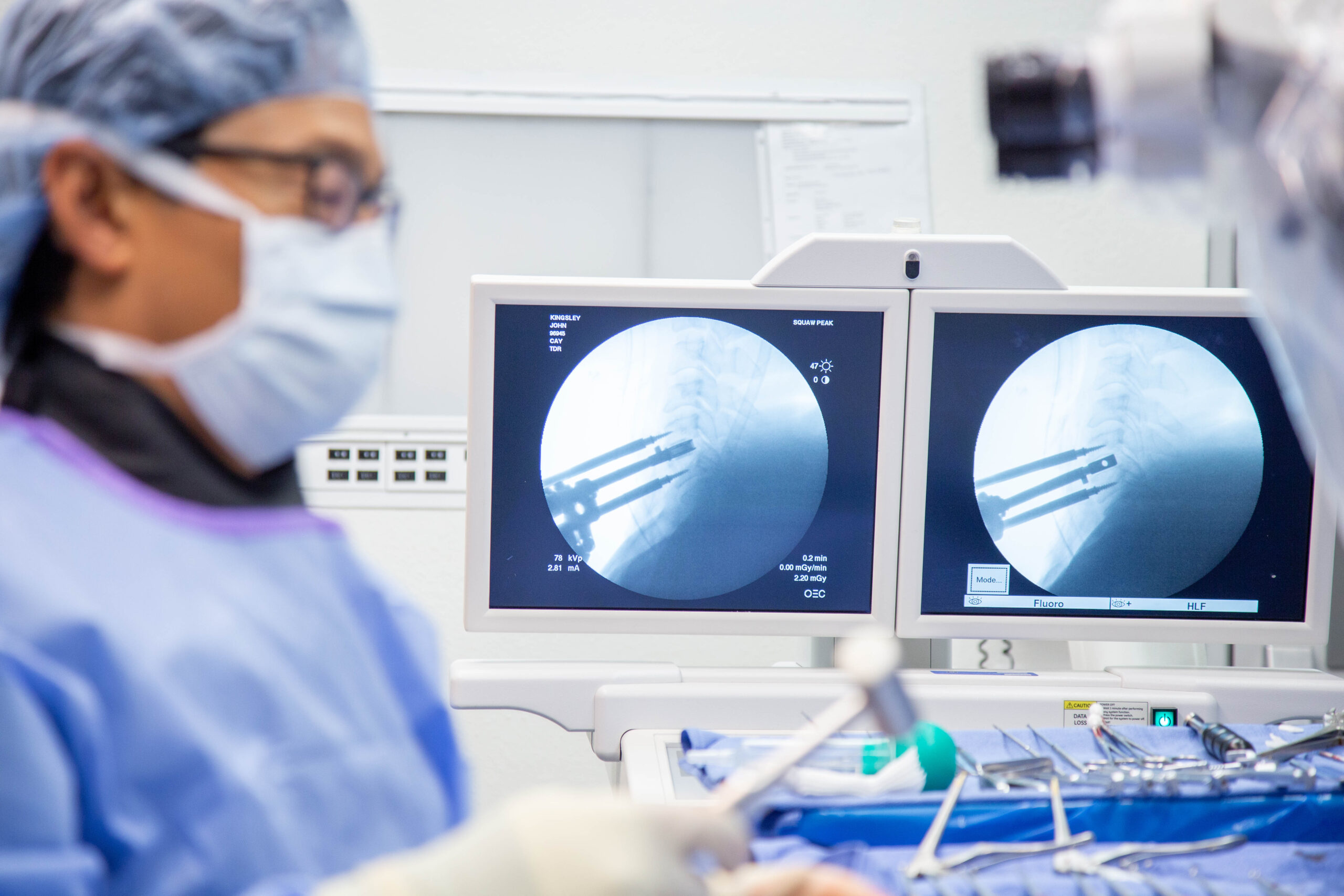This includes facet joint degeneration, osteoarthritis, or ankylosing spondylitis.
Artificial disc replacement (ADR) is a motion preservation spine surgery that removes a painful damaged spinal disc and replaces it with an artificial disc. Artificial disc surgery can be performed in the neck (cervical spine) or lower back (lumbar spine).
Artificial discs are designed to replace degenerative discs and replicate our spine’s natural motion. The ADR device first received FDA approval in the United States in 2004. Since then, numerous approved disc replacement devices have been developed, tested, and implanted in spine patients. If you’d like to talk to one of our professionals about artificial disc replacement surgery contact us or make an appointment today!

Cervical artificial disc replacement, or arthroplasty, is performed under general anesthesia utilizing an incision in the front of your neck. The surgeon dissects through the neck safely to the front of the damaged disc. Then the damaged disc and bone spurs are removed. The disc space is prepared for the artificial disc to be implanted. Once implanted, the new artificial disc is confirmed on x-ray for proper positioning.
Finally, the surgeon removes his retractors and closes the skin with a suture. The patient is sent to the recovery room for recuperation lasting a few hours.
The goal of artificial disc replacement aims to relieve spinal pain and restore standard disc height due to degenerative disc disease. Unlike a spinal fusion, which aims to prevent motion in the spine to reduce pain, the artificial disc preserves motion.
Artificial disc replacement has become one of the best surgical innovations for patients suffering from neck and back pain in the past 15 years. In the past orthopedic spine surgeons fused the spinal segments because of low back or neck pain. They now have motion-preserving surgery in artificial disc replacement.
Artificial disc replacement evolved from the success of artificial hips and knee replacements in orthopedic surgery. Patients have had excellent outcomes with disc replacement because they have kept them moving and active as they age.
Best candidates for artificial disc replacement surgery suffer from severe neck or back pain that significantly impedes their quality of life. The best outcomes and benefits for artificial disc surgery have been shown with patients aged 18 to 60.
Patient candidates for artificial disc replacement must have experienced chronic neck or back pain not relieved by nonsurgical treatment for at least six months. They must have tried conservative treatment options such as physical therapy, over-the-counter or prescription analgesics, and steroid injections before being considered candidates for artificial disc replacement surgery.


Desert Institute for Spine Care’s expert spine surgeons has been involved with artificial disc replacement or total disc arthroplasty research and clinical studies for over ten years. Our world-renowned orthopedic spine specialists in Phoenix, AZ work with patients to treat complex spine conditions, including those who have failed previous surgical treatment.
Our surgeons routinely offer patients a second opinion to evaluate and provide the least invasive yet most effective treatment options. DISC offers a complete range of nonsurgical, ultra-minimally invasive, motion-preserving, and minimally invasive solutions for patients suffering from painful neck and back conditions.
When your neck or back pain prohibits you from working and living an active physical lifestyle, you should consult with an expert spine surgeon.
Our spine health blog features up-to-date spine education and expert spine tips from our spine specialists here at DISC.
1635 East Myrtle Avenue Suite 100, Phoenix, AZ 85020, USA
18700 North 64th Drive Suite 105, Glendale, AZ 85308, USA
8630 East Vía de Ventura Suite 210, Scottsdale, AZ 85258, USA
3487 South Mercy Road, Gilbert, AZ 85297, USA
1635 East Myrtle Avenue Suite 400, Phoenix, AZ 85020, USA